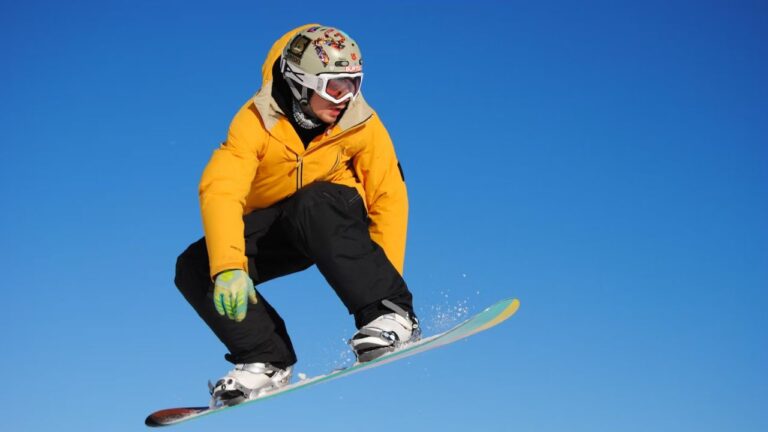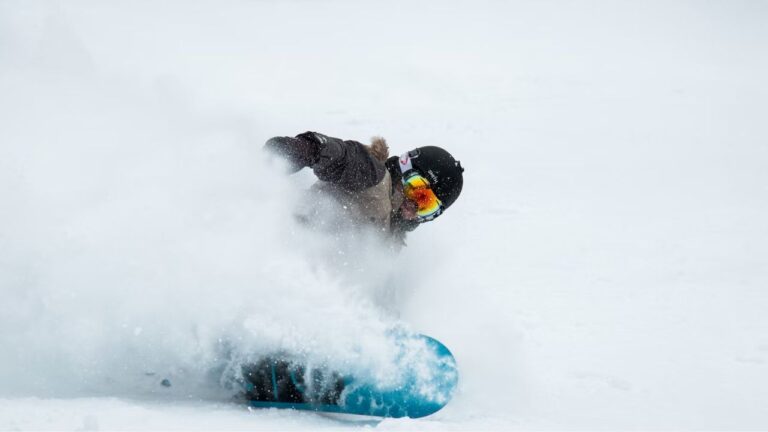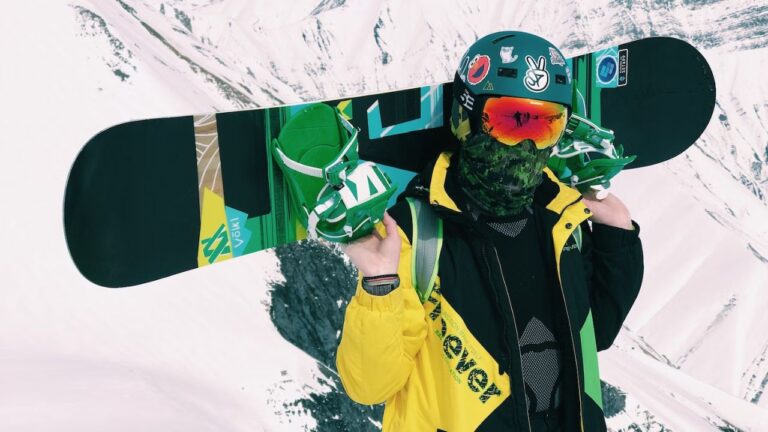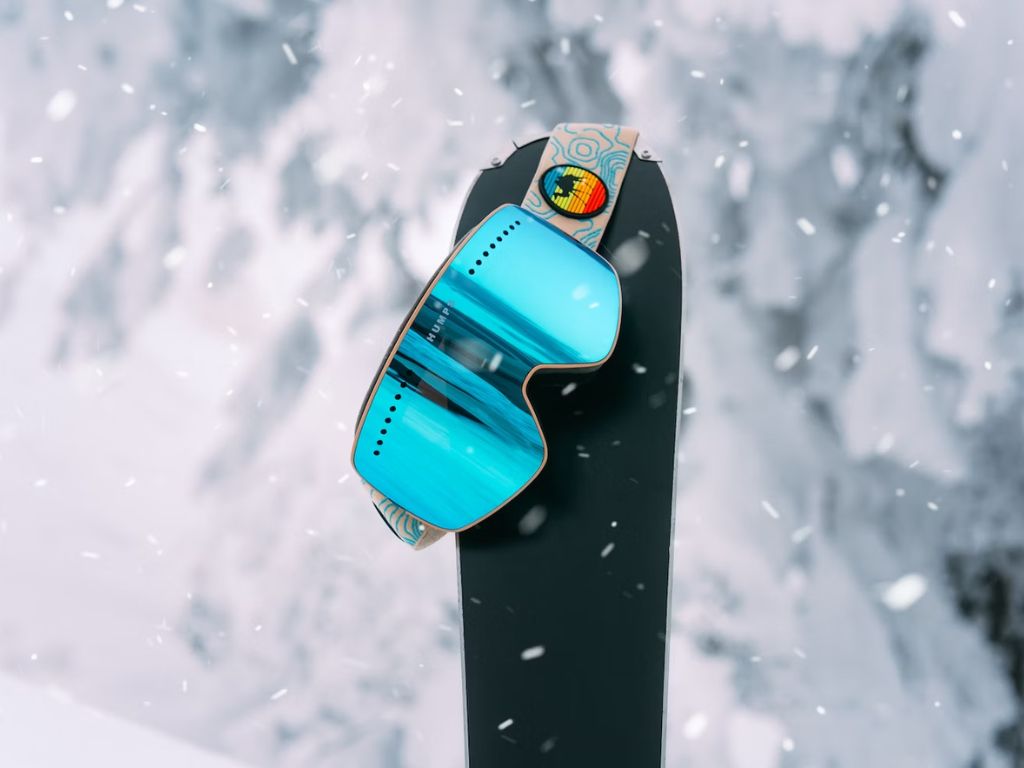To wax, or not to wax, that is the question.
While Shakespeare never said that, he should’ve. The unending debate among snowboarders might’ve ended by now if it started back then.
Every newbie snowboarder is told that a properly waxed snowboard is the only way. But have you ever wondered if riding an unwaxed snowboard is viable? Let’s find out.
Wax is often considered a snowboarder’s best friend – it undoubtedly improves traction, grip, and control, enabling you to stay balanced and in the best shape. But how big of an impact does that actually make? And does it vary among snowboard types?
You can ride an unwaxed snowboard. However, your ride will neither be as fast nor smooth as it could’ve been with a waxed board. Additionally, you’ll be at a higher risk of abrasion or damage to your snowboard. You’ll be especially slowed down on the flats.
Does that mean you don’t have to wax your board if you don’t care for higher speed or absolute precision? Technically, yes, but there’s more to it than that. You might wanna stick around till the end.
Should you wax your snowboard?
It’s highly recommended that you wax your snowboard as and when necessary. It is crucial in maximizing your performance on the slopes and ensuring a smooth and enjoyable ride.
Wax is not just a cosmetic addition to your snowboard. The primary function is to minimize friction between the snowboard base and the snow, allowing for improved glide and maneuverability.
It acts as a lubricant, reducing drag and resistance as you carve down the slopes. With wax, your board’s base would have increased friction, making it sluggish and easier to control.

1. How does wax improves performance?
Wax offers a range of benefits that can significantly enhance your snowboarding experience.
One of the key advantages is improved traction and grip. The wax fills in the microscopic pores of the base, creating a smooth surface that provides better adherence to the snow. This allows you to maintain control and stability while making turns or riding on uneven terrain.
You get better maneuverability thanks to the reduced friction. This added responsiveness can make a noticeable difference in your ability to navigate through various terrains and execute tricks with precision.
Additionally, it acts as a protective layer for your snowboard’s base. It helps to prevent the base from drying out and becoming damaged by moisture, dirt, and debris. Wax also provides some resistance against scratches and abrasions, increasing the longevity of your snowboard.
Finally, wax improves edge hold, particularly on icy or hard-packed snow. I’m not kidding. I have experienced this myself. By reducing friction, the wax allows the edges to engage more effectively with the snow, providing increased grip and stability.
2. How will riding an unwaxed snowboard affect your riding?
Riding an unwaxed snowboard is unlikely to cause instant damage to the rider or the board. However, it’s not ideal. The effects may not be immediately noticeable to every rider, but they can become more apparent as you progress in skill and encounter different snow conditions.
Over time, white spots may appear on the base as you ride without waxing your board. This dry and frosty appearance indicates a lack of wax, which can result in a slower ride.
It’s not just about speed. Many proficient riders have reported experiencing a smoother ride with a waxed board. One of my biggest concerns with this debate is the need for more knowledge.
Based on my experience, here’s my suggestion: if you don’t need a waxed board, try it first. Most snowboarders who ask me about this have never tried experimenting with wax. So, they don’t know the difference.
While the absence of wax may not be apparent during aggressive carving at a 30º angle with the snow, its presence—or lack thereof—becomes more noticeable when riding on long flat sections.
Without wax, an unwaxed board can have difficulty gliding smoothly on flat terrain, potentially leading to getting stuck or requiring extra effort to navigate these areas.
This effect becomes particularly pronounced when riding in slushy conditions like “mashed potato” snow during the spring. A freshly waxed board can provide a more enjoyable riding experience in such situations, while an unwaxed board may feel like it’s sticking to the snow, almost like riding on suction cups.
IMPORTANT: Not all snowboards need to be waxed equally. Sintered bases are designed to hold wax and perform incredibly well when tuned. In comparison, extruded bases can only retain little wax and can be used unwaxed in most cases.
And waxing does become important because most newcomers get a sintered base – which is more susceptible to burn and damage when left unwaxed.

Can failure to wax damage your snowboard?
It’s common for snowboarders to wonder whether neglecting to wax their snowboard can lead to long-term damage.
Not waxing your snowboard may damage the board. The biggest concern with an unwaxed board is the increased friction. Without a layer of wax, the base can become dry and rough over time. This exposes your board to damage from the elements and the abrasive nature of the snow. And affects the ride quality.
The friction generated from riding on rough, unwaxed surfaces can cause the base material to wear down faster, decreasing the board’s overall lifespan. Over time, you may notice that the base becomes more scratched and damaged, affecting its performance and glide.
Moreover, without wax, the base of your snowboard is more susceptible to absorbing moisture. When snow melts on the base, it can seep into the material’s pores and cause it to expand.
This can lead to delamination, where the layers of your snowboard separate, compromising its structural integrity. Delamination not only affects the performance of your board but can also be expensive to repair or may require you to replace your snowboard altogether.
Another potential issue is the buildup of dirt, debris, and pollutants on the base. These particles can become embedded in the base material as you ride, creating a rough and uneven surface.
This buildup affects the glide and speed of your board and can also hinder the effectiveness of any wax application in the future. It’s important to regularly clean your snowboard base to remove any accumulated dirt and debris.
What about new & old boards?
Regarding new snowboards, there are several important considerations regarding waxing. Whether you’ve just purchased a brand-new snowboard or are considering investing in one, understanding how waxing fits the equation is crucial.
1. Do I need to wax a new snowboard when I buy it?
Most new snowboards come pre-waxed from the factory. However, more than this wax may be required for optimal performance, so waxing your new board before hitting the slopes is recommended. This ensures the base is properly conditioned and provides the best riding experience.
This initial wax is a protective layer during storage and shipping, ensuring the base remains in good condition until it reaches the customer.
To maximize your new snowboard’s potential, waxing it before its first use is recommended. A fresh wax application tailored to your riding style, preferences, and snow conditions can significantly enhance your overall experience.
That said, I want to clarify that it’s not really necessary. Most people prefer to get 2-3 rides out of the factory wax before anything else.

2. Can I ride a snowboard that has been stored unwaxed?
Generally, you shouldn’t ride an unwaxed snowboard that has been in storage. Waxing it before riding is advisable. Storing a snowboard unwaxed can cause the base to dry out and lose its performance characteristics. It’s best to wax your snowboard before storing it.
Before using your snowboard, clean the base thoroughly to remove any dirt, debris, or old wax that may have accumulated. Use a base cleaner or a mild detergent with a soft brush to gently scrub the base. Once the base is clean and dry, it’s time to apply a fresh coat of wax.
By waxing your snowboard after storage, you rejuvenate the base, ensuring it remains in optimal condition for your upcoming rides. This also allows you to tailor the wax to the current snow conditions, providing the best performance and glide.
Remember, proper waxing enhances your snowboard’s performance and protects and extends its lifespan. It’s a crucial step in maintaining your investment and ensuring you can enjoy your snowboarding adventures fully.
Snowboard Wax Alternatives
Snowboard wax alternatives can offer some benefits, but they may only partially replicate the performance of traditional snowboard waxes. The latter is specifically formulated to optimize performance in various snow conditions, temperature ranges, and riding styles.
That being said, the alternatives I’ve mentioned can still enhance the glide, reduce friction, and improve the overall performance of your snowboard.
1. Paraffin Wax & Candle Wax
Believe it or not, ordinary candle wax can also serve as a substitute for snowboard wax. It’s readily available and can be applied to the base of your snowboard using a technique similar to traditional waxing.
While it may not provide the same level of performance as dedicated snowboard waxes, candle wax can still offer reduced friction and improved glide.
Paraffin wax is a petroleum-based wax that’s another common alternative to traditional snowboard wax.
2. Phantom Waxless Glide
Phantom Waxless Glide is a revolutionary alternative to traditional waxing. It’s a one-time application treatment that permanently enhances the glide of your snowboard.
Unlike traditional wax, which needs to be periodically reapplied, Phantom Waxless Glide penetrates the base material of the snowboard and modifies its structure to reduce friction.
This treatment is designed to last the lifetime of your snowboard, eliminating the need for regular waxing. It offers consistent performance and can be a convenient option for riders who prefer a low-maintenance approach.
3. Graphite Wax
Graphite wax is a popular alternative for snowboarders looking for enhanced glide and reduced friction. It contains graphite particles that help reduce static friction and improve speed on the snow. Graphite wax is particularly effective in cold and dry snow conditions.
4. Fluorocarbon Wax
Fluorocarbon waxes are known for their exceptional water-repellent properties and ability to reduce friction on wet snow. These waxes provide excellent glide and are often used by competitive riders or those seeking high performance in wet or slushy conditions.
However, it’s important to note that some fluorocarbon waxes have raised environmental concerns due to their potential impact on ecosystems.
Before using any snowboard wax alternative, it’s recommended to thoroughly research the specific product, its compatibility with your snowboard’s base material, and its performance characteristics.

Alternative Options to Traditional Waxing
1. Structured Snowboard Bases
Snowboard manufacturers have recently introduced structured bases as an alternative to traditional waxing. These bases feature strategically placed patterns or textures that mimic the effects of wax on the board’s performance.
The structured patterns can create micro-edges and channels, allowing for better glide and water displacement. They also help reduce friction and increase speed, similar to a waxed surface.
Structured snowboard bases offer several advantages:
- They eliminate the need for regular waxing.
- They provide consistent performance across a wider range of temperatures and snow conditions.
However, it’s important to note that structured bases have their limitations. While they can provide enhanced glide and performance, they may not match the performance of a freshly waxed snowboard, especially in extremely cold or warm conditions.
Additionally, the patterns on structured bases can wear down over time, affecting their effectiveness. In such cases, riders may need to use other waxing alternatives or consider a traditional wax job.
2. Waxless Snowboard Technologies
Another alternative to traditional waxing is the emergence of waxless snowboard technologies, such as “fishscale” or “skin” bases. These bases incorporate specialized materials or patterns that enhance grip and glide without regular waxing.
Fishscale bases feature tiny raised scales or ridges along the base’s length. These scales reduce friction during a glide, allowing the snowboard to slide smoothly while providing traction when ascending slopes.
This technology is especially popular in split boards, designed for backcountry snowboarding, and can be split into skis for climbing uphill.
Skin-based snowboards utilize a plush, synthetic material attached to the base. The material functions similarly to the skins used in traditional ski touring, providing grip when ascending and allowing the snowboard to slide freely during descent.
It offers excellent traction and is well-suited for riders who frequently engage in uphill travel or backcountry exploration.
Expert QnA
Q. Is waxing a snowboard necessary?
Waxing a snowboard isn’t an absolute necessity, but it’s highly recommended. Wax plays a crucial role in enhancing performance and maintaining the overall condition of the board. It provides better traction, glide, and control on the snow, making your riding experience more enjoyable.
Q. How often should I wax my snowboard?
Generally, waxing your snowboard every 3 to 5 days on the mountain is recommended. The frequency will depend on snow type, temperature, and ride frequency. However, if you notice diminished performance or your base appears dry and dull, it’s a good indicator that it’s time to wax.
Q. Can riding an unwaxed snowboard damage it?
While riding an unwaxed snowboard won’t necessarily cause immediate damage, it can have long-term effects on its performance and durability. The base becomes dry, rough, and susceptible to scratches and abrasions without wax.
Q. Can I ride an unwaxed snowboard in certain conditions?
Riding an unwaxed snowboard may be more feasible in certain conditions, such as fresh powder or wet snow, where the natural moisture can provide some glide. That said, waxed boards generally perform better in all conditions, offering improved control and maneuverability.


